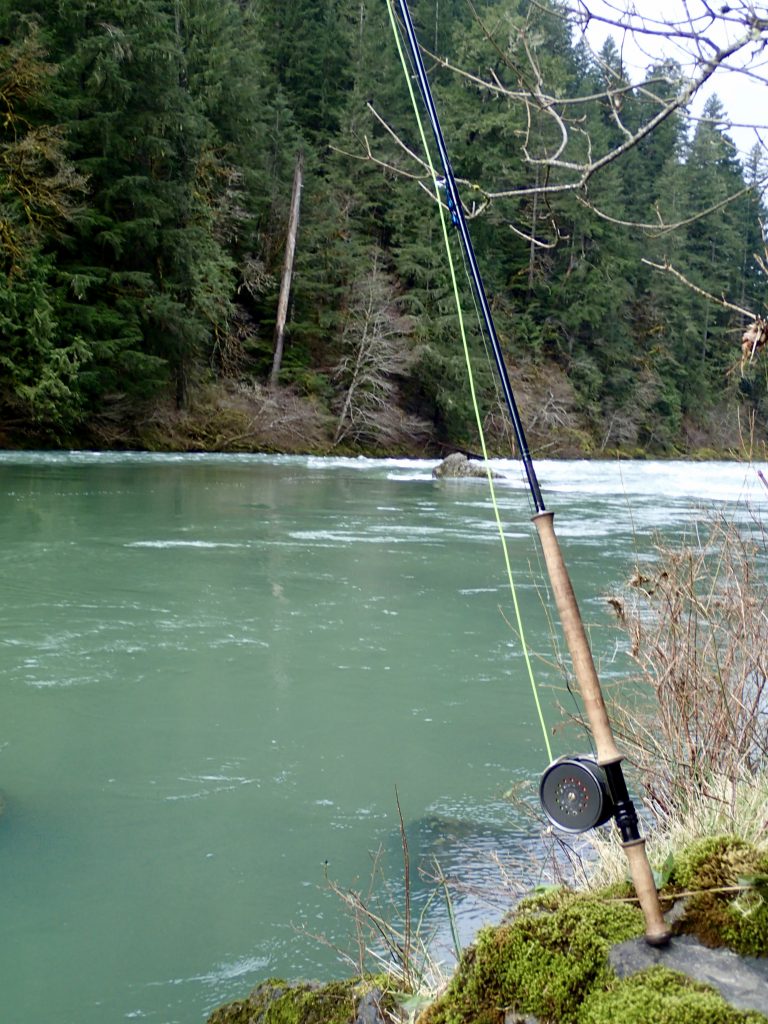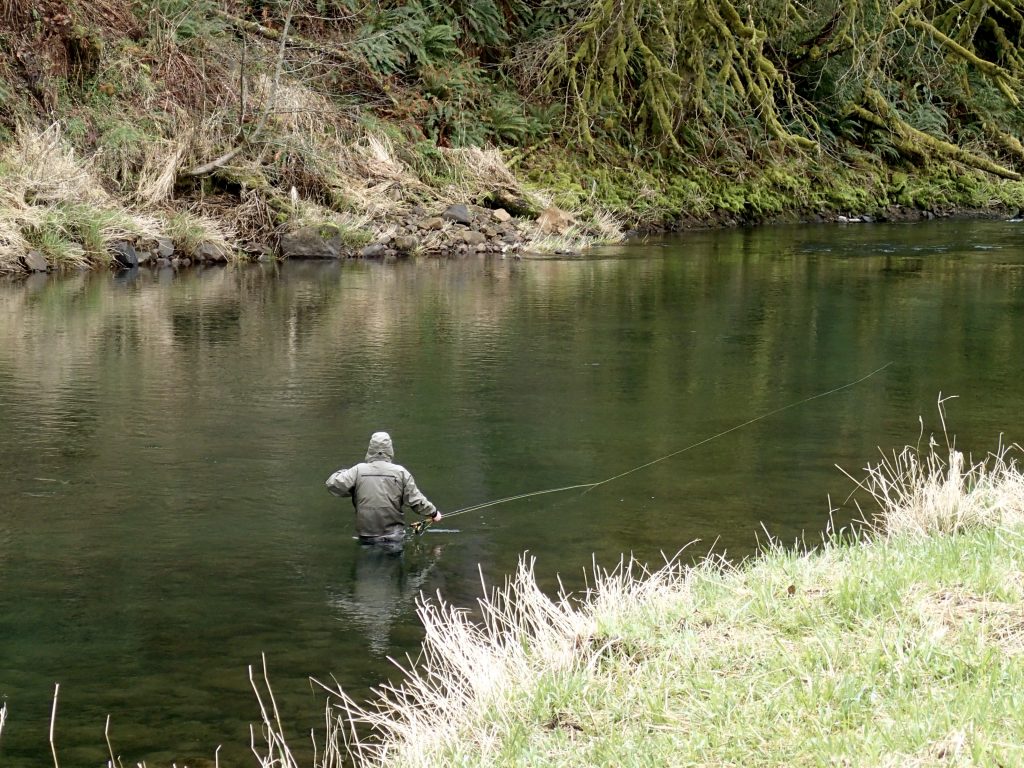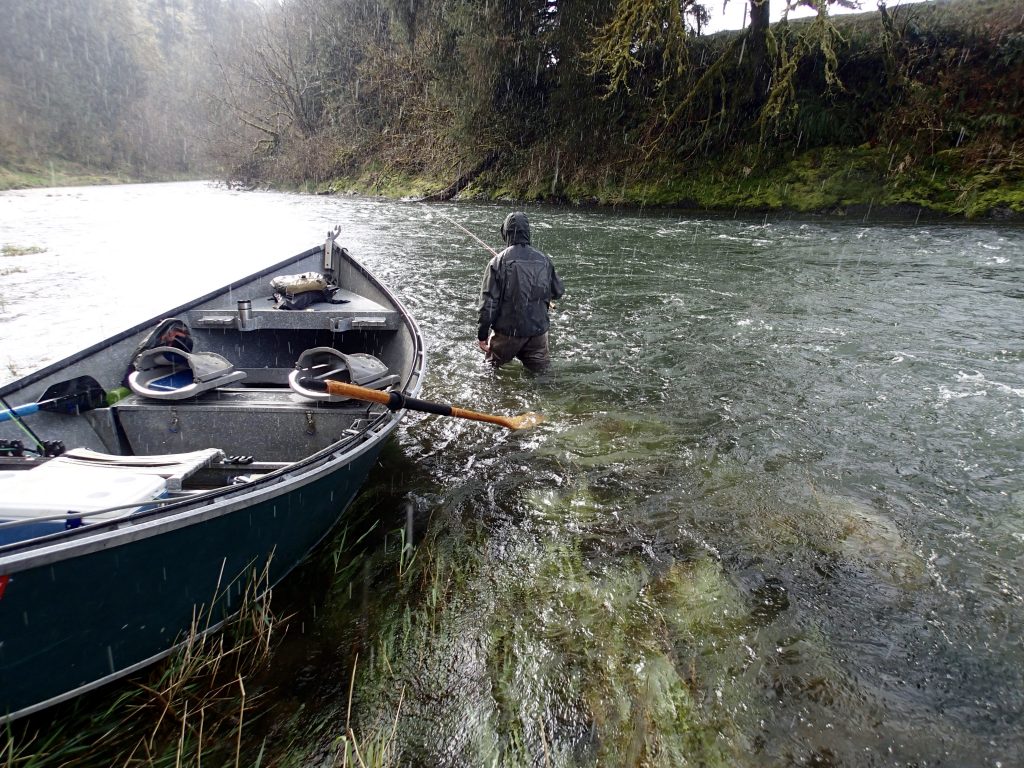Simplify Your Spey, by J. Lusher
Swinging the fly for winter steelhead can be daunting. Two handed rods, Skagit lines and T-material. 525 grains or 540? T-11, T-14, or T-8? It can seem complicated but it doesn’t have to be. Two handed rods are a game changer for the steelheader. Time between casts is shorter, room for the backcast becomes unnecessary and distance is easier to achieve. All of this means that your fly spends more time where it needs to be, in the water. Along with the switch to two-handed rods comes a seemingly endless list of things you need and it can be a bit overwhelming. Let’s try to simplify.

There is no doubt there are more effective ways to catch fish on the fly. A dead drifted egg pattern or bead under a bobber can be deadly. However, I don’t think there is a more pleasing way to catch a fish than the swung fly. Casts properly executed jump off the tip of your spey or switch rod 40, 50, 60 feet or more with little effort. Sidearm them under branches 4 feet off the water on the opposite bank and let it swing. My first two handed rod was an 8 wt switch rod. I knew nothing about lines or tips. I got thinking it would be a great indicator rod for my winter steelheading. I acquired the rod in the summer, put an 8 wt sinking tip full line on it and went to the river. I tried these crazy “pick your line up off the water into a backcast and then out again” things and somehow didn’t impale myself. Once and a while something good would happen and I’d be stoked. I started researching things and realized there was a whole world of lines and tips all designed for two handed rods and I thought holy crap, what have I got into? As I progressed, the possibilities of what could be done with these rods became apparent. I never did put the indicator on it, but I still think it would be a great indicator rod.

You’ve just got your first rod and now you need a line. If you’re winter fishing, get a skagit head. These heads are designed to throw tips that get your fly down in the water column where it needs to be. The grain weight of your skagit head is extremely important. Recommendations from the manufacturer and your local shop are a good place to start, but don’t stop there. A head that is too light or too heavy will make the best rod feel like a turd. Spend some time and money figuring out what weight head works best for you. You’ve just spent $250-$1200 hundred dollars on a rod, don’t be stingy with your line. Get a couple, borrow some, find some used ones, but try a few on your rod. Having an experienced caster check your setup helps, but in the end everyone is an individual with their own style. Find a line that feels good to you.

Tips, there are a bunch of choices. Riffle or bucket, MOW tips, T-Material, poly-leaders, ahhhh! For winter fishing T-Material is the standard. All other tips designed for winter fishing on skagit lines are based on T-Material. In my opinion, a 10’ tip is optimal. 12’ is just two more feet to pick up and deal with. I started with 12’ tips thinking I wanted to get as deep as possible. It was a pain to get moving and I had trouble with it. I switched to 10’ tips and haven’t looked back.
Keep the length of your T-material consistent. Different lengths require your casting stroke to change. Pick a heavy one, T-14 or T-11 in a 10’ length and a light one, T-8 in the same length and go fish. Put a heavier fly on if the waters up, switch to a lighter one if you hang up, switch tips if you still hang up and go through it again, heavy to light fly. With two tips you can fish 90% of the water you should be fishing. Don’t overthink it. My favorite leader material is Maxima. I fish 12 lb in the winter and 10 lb in the summer. On a sinking tip 3 ft of leader material is the maximum. I will fish it down to 1.5 ft or so then switch it out. Any more than 3 ft. causes casting issues, it just makes things tougher.
Next time we’ll talk about how to swing the run. Now get out there and fish!






Josh, I want to come for a visit, to try this you got a extra pole for me.
Lots of extra poles! Come on up!
This is the best place to be in Oregon. Homewaters fly fishing is a superb place with everything possible you would want & more !!! The owner Jason Mitzner is the most knowledgeable, kind, and easy going person that I have ever met . We really love his shop and the valuable knowledge he shares !!
Thank you for the kind words and support, Laurie!